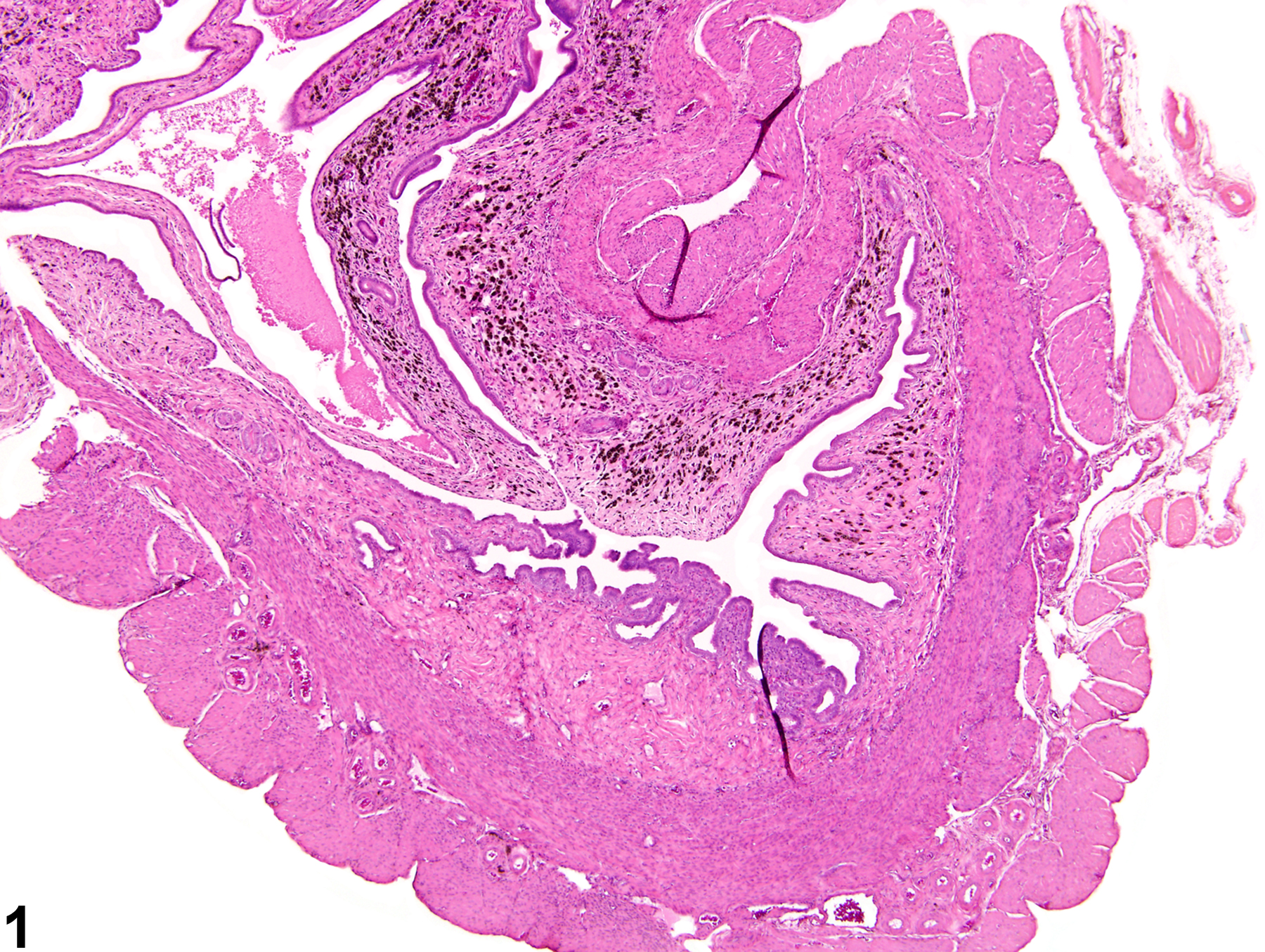Reproductive System, Female
Uterus - Pigment
Narrative
Golden brown to darker brown pigment is sometimes seen in the uterus (Figure 1 and Figure 2). Hemosiderin may be seen secondary to hemorrhage, especially in multiparous females at sites of placentation. Depending on the chronicity, there may be extravasated erythrocytes or erythrocytes within macrophages. Other types of pigment may also be seen, such as lipofuscin or ceroid.
Uterus - Pigment should be diagnosed when it is considered to be relevant to the study (or if it is unclear whether it is relevant to the study) or if it is unusually prominent. Not all pigments have to be diagnosed, as some are ubiquitous in aging animals or are secondary to another disease process (e.g., hemorrhage) and not toxicologically meaningful. The pathologist should use his or her judgment in deciding whether or not the pigment should be diagnosed. Definitive pigment identification is often difficult in histologic sections, even with a battery of special stains. Therefore, a diagnosis of "pigment" (as opposed to diagnosing the type of pigment, e.g., hemosiderin or lipofuscin) is most appropriate. The pathology narrative should describe the morphologic features of the pigmentation. When pigment is diagnosed, it should be given a severity grade.
Firth CH, Highman B, Burger G, Sheldon WD. 1983. Spontaneous lesions in virgin and retired breeder BALB/c and C57BL/6 mice. Lab Anim Sci 33:273–286.
Abstract: https://www.ncbi.nlm.nih.gov/pubmed/6876733National Toxicology Program. 1989. NTP TR-365. Toxicology and Carcinogenesis Studies of Pentaerythritol Tetranitrate (CAS No. 78-11-5) with 80% D-Lactose Monohydrate (PETN, NF) in F344/N Rats and B6C3F1 Mice (Feed Studies). NTP, Research Triangle Park, NC.
Abstract: https://ntp.niehs.nih.gov/go/6991
Uterus - Pigment in a female F344/N rat from a chronic study. There is brown pigment in the endometrium.



